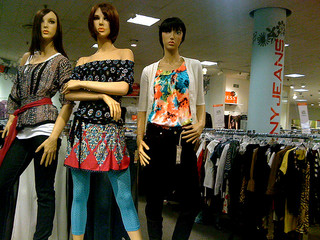Clothing Makers Join Ranks of Manufacturers Returning to U.S. Soil

The trend toward bringing manufacturing jobs, which have moved toward cheaper labor pools in developing nations for decades, back to the U.S. to produce more American jobs and higher quality products is well underway. In the midst of this influx of new jobs lies the garment industry, where small to medium-sized clothing designers and manufacturers have begun to reclaim a stronghold in the domestic marketplace.
New York and Los Angeles have remained clothing hubs, but some may be surprised to see small cities join in this Made in the U.S.A craze. Now places like Fort Wayne, Indiana and Raleigh, North Carolina are emerging as legitimate sources for high-end, high-quality clothing. Part of this trend involves resurrecting skills that American workers have almost lost, such as the ability to construct a pattern for a new garment, tailor clothing, sew clothing, knit, and maintain the sewing machines used to make denim products such as jackets and jeans.
Raleigh, nestled in the Blue Mountains, is emerging as a manufacturing hub for denim products. Some New York clothing designers and makers are turning to 80-year-old women for the valuable skill of hand knitting sweaters. Still, this trend is new, and about 97 percent of all the clothing sold in the United States is manufactured elsewhere, largely in China, according to the American Apparel and Footwear Association. But as labor costs rise in Asia, along with higher shipping charges and problems with quality control, manufacturers of all types of products are looking to move their operations back to the states.
These trends are still most evident in small garment makers, and has not yet been joined by large retailers such as Wal-Mart. However, as more affordable labor forces, especially those who are highly trained in skills that most workers in developing nations still lack, the ball is starting to roll.
Other products that American manufacturers are beginning to produce domestically include lace and other fine textiles.






